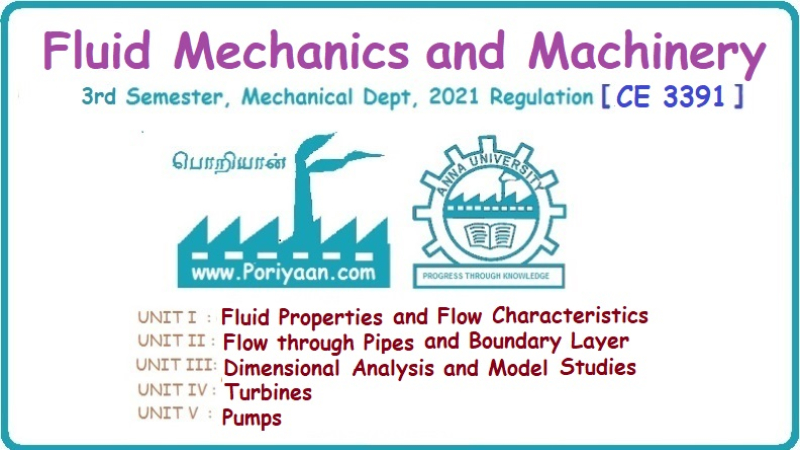Fluid Mechanics and Machinery: Unit 1: Fluid Properties and Flow Characteristics
Principle of Conservation of Energy [Fluid Flow]
Energy can be neither created nor destroyed but it can be converted from one form to another form.
PRINCIPLE OF CONSERVATION OF ENERGY Energy can be neither created nor destroyed but it can be converted from one form to another form. This is called principle of conservation of energy. This is the basis for Bernoulli's theorem. According to this, total energy at any point remains constant. There are three different forms of energy The energy possessed by a fluid by virtue of its position above or below the datum line is called potential energy. Potential energy = Wh = mgh = mgZ Where h = Z = height of fluid particle above datum line in m m = mass of fluid in kg w = weight of fluid in N g = acceleration due to gravity Epotential in J/kg The energy due to fluids pressure is called pressure energy. Pressure energy = PUs p-pressure in N/m2 Us - specific volume of fluid in m3/kg Us = 1/ρ so pressure energy (E)pressure = P/ ρ in J/kg The energy of the fluid by virtue of its velocity is called kinetic energy. Kinetic energy = 1⁄2 mV2 m = mass of the fluid in kg V = velocity of the fluid in m/s Ekinematics in J/kg According to the principle of conservation of energy, total energy of fluid remains constant. Total energy = Potential energy + kinetic energy + pressure energy = gZ + V2/2 + P/p Divide the above equation by g on both sides Total head or total energy = Z + V2/2g + P/ρg = Z + V2/2g + P/w Since total energy or head of fluid remains constant. Z1 + V12/2g + P1/w = Z2 + V22/2g + P2/w This is known as Bernoulli's equation.1. Potential energy:
2. Pressure energy:
3. Kinetic energy:
Fluid Mechanics and Machinery: Unit 1: Fluid Properties and Flow Characteristics : Tag: : - Principle of Conservation of Energy [Fluid Flow]
Related Topics
Related Subjects
Fluid Mechanics and Machinery
CE3391 3rd semester Mechanical Dept | 2021 Regulation | 3rd Semester Mechanical Dept 2021 Regulation
